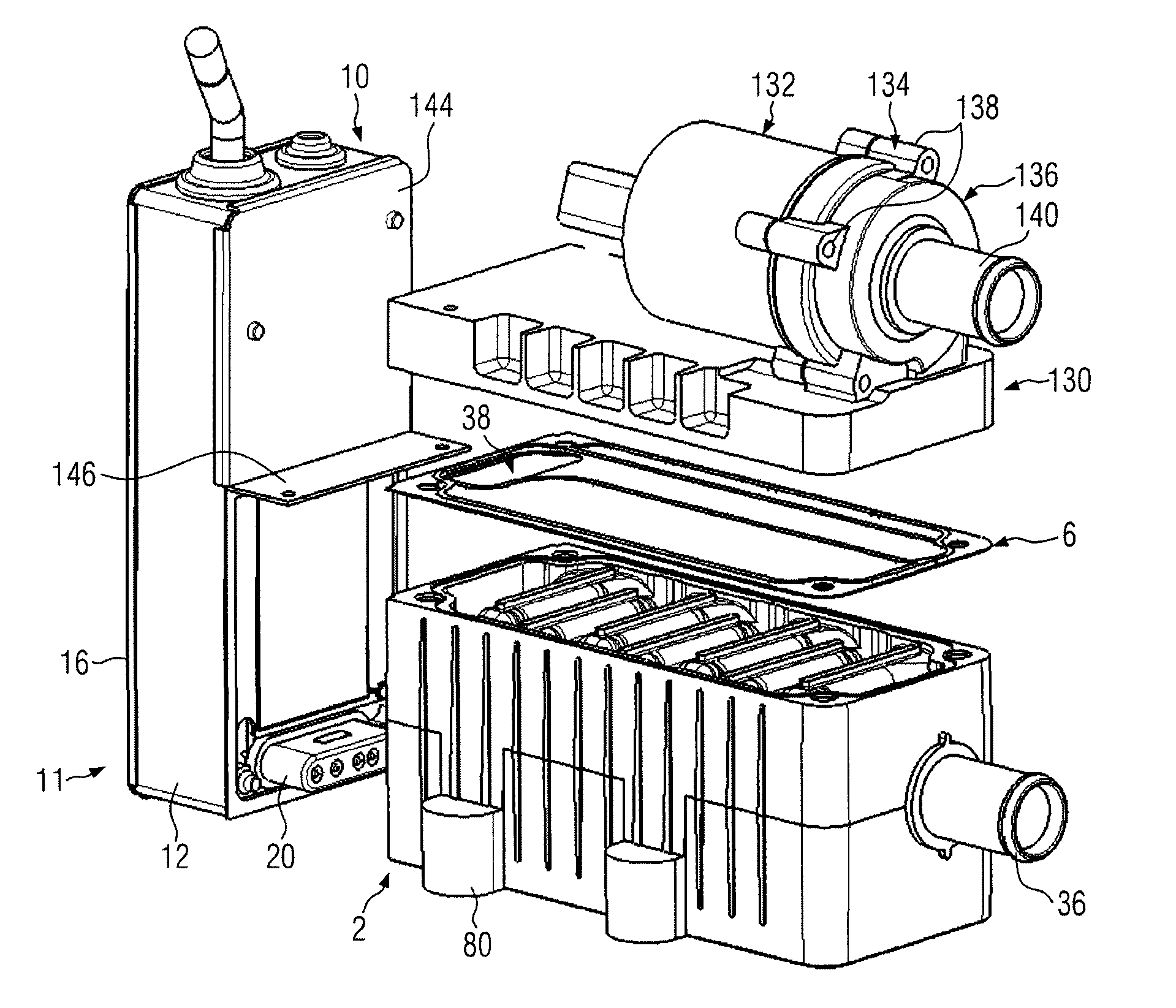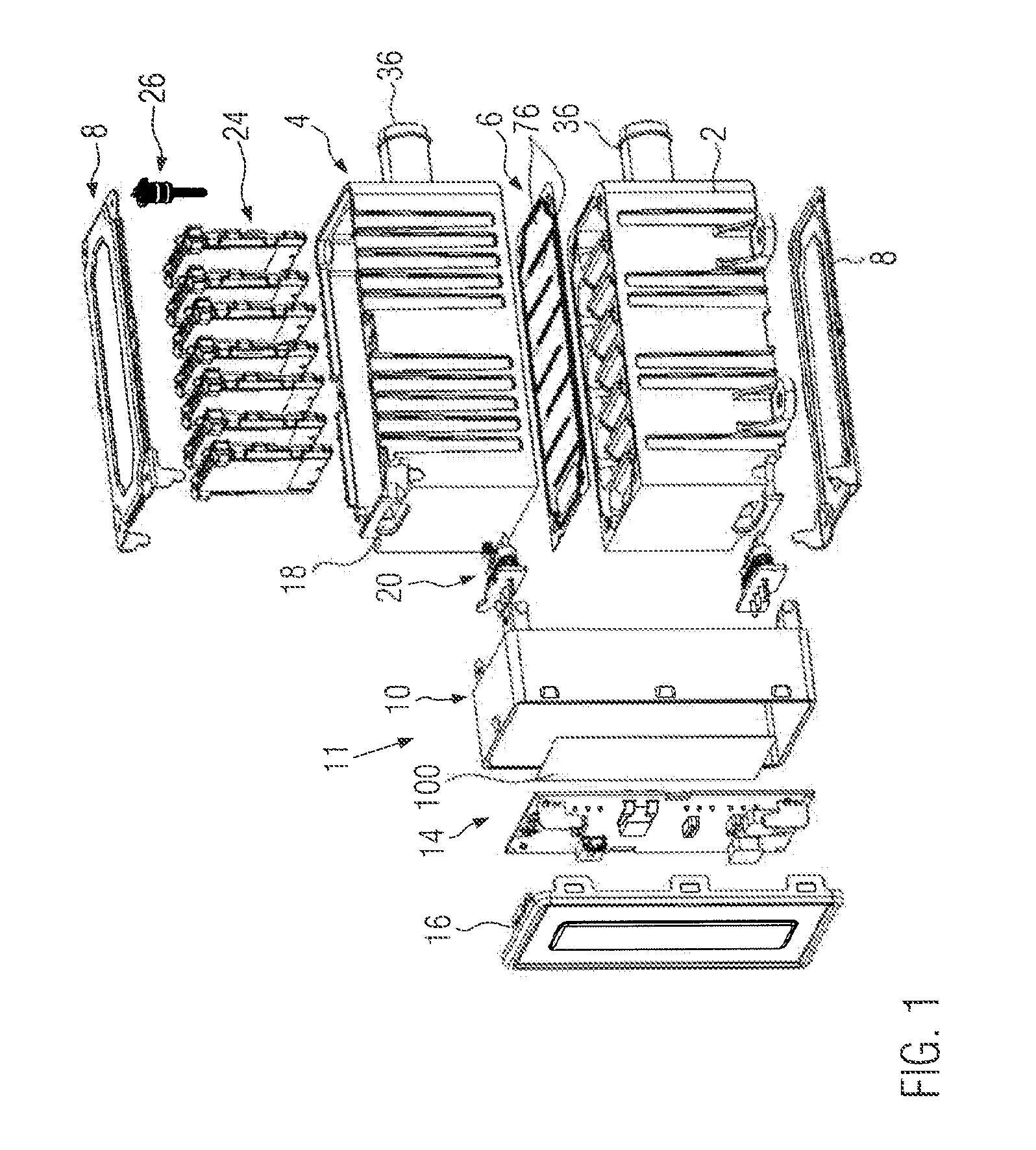Electrical heating device
a heating device and electric technology, applied in the direction of fluid heaters, air heaters, lighting and heating apparatuses, etc., can solve problems such as easy failure, and achieve the effect of simple construction
- Summary
- Abstract
- Description
- Claims
- Application Information
AI Technical Summary
Benefits of technology
Problems solved by technology
Method used
Image
Examples
first embodiment
[0041]FIG. 1 illustrates a perspective exploded drawing of an electrical heating device. It comprises a first housing 2 and a second housing 4, formed essentially mirrored to it, which with the intermediate positioning of a covering element 6 are joined together, each being covered on the outside by a housing cover 8.
[0042]On a common face side of the two housings 2, 4 there is a control housing, identified with the reference numeral 10, of a control device 11, which has a control housing frame 12, which accommodates an assembled conductor board 14 and is closed by a control housing cover 16.
[0043]On their face sides facing the control housing 10, both housings 2, 4 have a housing connection opening 18 which is provided close to the housing cover 8. In this control housing connection opening 18 in each case a plug housing 20 can be inserted, which is manufactured from an insulating material, for example plastic, and bears a plurality of plug elements 22, which provide an electrical ...
fourth embodiment
[0067]FIGS. 14 and 15 illustrate a The same components are identified with the same reference numerals compared to the previously discussed embodiment.
[0068]As the previously described embodiments, the fourth embodiment comprises a housing 2 which is joined to a housing cover 148 and mounting flanges 150 for mounting the electrical heating device are fitted to its longitudinal sides. On a face side of the housing 2 and the housing cover 148 there is the control housing 10 with the controller which is accommodated in it and which is not detailed in FIGS. 14 and 15. This control housing 10 is in the present case formed L-shaped with an overhang 152 protruding slightly over the housing cover 148, with two cable clamps 154, 156 mounted on its face sides for mounting and sealing cables secure against twisting and strain. The cable clamp 154 is used for connecting a connecting cable; the larger cable clamp 156 is used for connecting a cable for the power current. The housing 2 is formed ...
PUM
 Login to View More
Login to View More Abstract
Description
Claims
Application Information
 Login to View More
Login to View More - R&D
- Intellectual Property
- Life Sciences
- Materials
- Tech Scout
- Unparalleled Data Quality
- Higher Quality Content
- 60% Fewer Hallucinations
Browse by: Latest US Patents, China's latest patents, Technical Efficacy Thesaurus, Application Domain, Technology Topic, Popular Technical Reports.
© 2025 PatSnap. All rights reserved.Legal|Privacy policy|Modern Slavery Act Transparency Statement|Sitemap|About US| Contact US: help@patsnap.com



